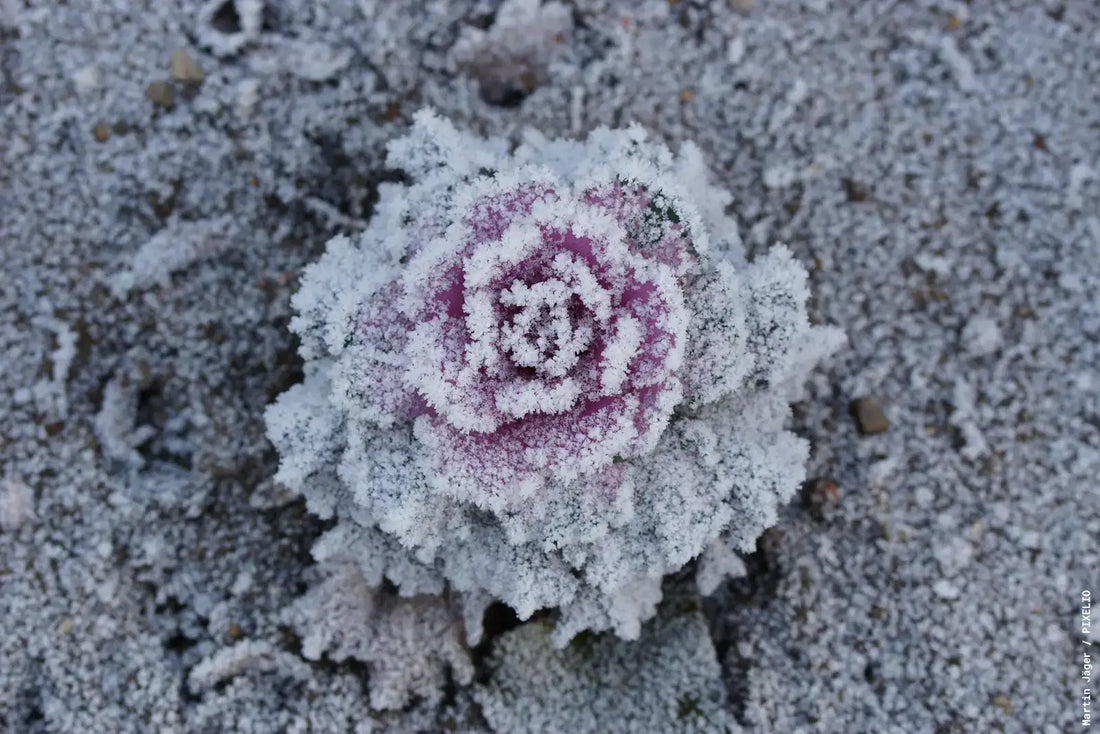Harvest your own vitamins even in the cold season
If you not only want to make the bode creatures happy, but also yourself, you can plant and sow vegetables and salads for the winter in the raised bed in autumn.
Especially in the darker season, our organism is happy about vitamins and minerals. Nut lettuce, garlic and winter spinach are just a few of the vitamins that can be sown or planted in autumn and continue to grow through the winter. Garlic can then be harvested and eaten in spring. Depending on the time of sowing and the temperatures, spinach and lamb's lettuce can also be harvested throughout the winter.
Raised beds are great for winter gardening. The height of the bed makes it easier to see and harvest the plants, even in cold, damp weather. In addition, a fleece or a roof can be stretched over the bed to gain access to the lettuce even in snow. If, despite care and attention, the vegetables are not ready for harvest, you have still done your raised bed a favor. Just like with green manure, you have protected the soil surface from the weather and provided your soil organisms with food from plant residues. In addition, you can cut off the remaining plant greens in spring, leave the roots in the ground and simply work the greens into the top layer of the substrate, thus ensuring a wonderful build-up of humus in the bed.
Planting tips for your WormUp RAISED BEET in autumn


Lamb's lettuce: The hardy version can be sown until October. Grown in rows or scattered, the lettuce is fairly easy to grow, requires little nutrition and the low temperatures reduce the risk of the plant starting to shoot and bloom.


Spinach: There is also a hardy version and the plant can withstand winds down to -10 degrees Celsius. Due to the short growing time, spinach is suitable as a pre- or post-culture for other plantings. If sown until the end of October, it can be harvested in spring.


Garlic: Is omnipresent and gives many dishes that certain something. Planted in autumn, the plant hibernates in the bed and can already be eaten in spring. Due to the strong smell, garlic has the property of keeping pests such as aphids, mites and Colorado potato beetles away from the raised bed and thus preparing good soil for subsequent planting.
Perennial plants

 Perennials and berries: If you want to enjoy certain flowers or berries in the summer of the following year, fall is just the right time to plant these perennial plants in raised beds. Planted sufficiently early before the first frosts, the perennial plants will already have rooted in autumn and can start growing immediately with the first warm days in spring. A fleece can protect these plants from the cold and too much moisture should also be avoided over the winter.
Perennials and berries: If you want to enjoy certain flowers or berries in the summer of the following year, fall is just the right time to plant these perennial plants in raised beds. Planted sufficiently early before the first frosts, the perennial plants will already have rooted in autumn and can start growing immediately with the first warm days in spring. A fleece can protect these plants from the cold and too much moisture should also be avoided over the winter.

 Spring bloomers/onion sets : Flowers such as crocuses, snowglöggli, May cups, tulips or other bulb plants are also perennial. Many of these bulbs are hardy and plant these bulbs in autumn before the first frosts for a colorful raised flower bed in spring.
Spring bloomers/onion sets : Flowers such as crocuses, snowglöggli, May cups, tulips or other bulb plants are also perennial. Many of these bulbs are hardy and plant these bulbs in autumn before the first frosts for a colorful raised flower bed in spring.
Plant in late summer to harvest in winter

Kale: Only really edible at low temperatures, since the production of bitter substances against predators is stopped during longer cold periods or during frost and the tart-sweet taste unfolds. The plant thrives in humus-rich, nutrient-rich substrate and likes sunny places.![]()

![]() Brussels sprouts : Is a small mineral and vitamin bomb. As with kale, the taste of the florets benefits from frost and the harvest can therefore take place between November and March. The plant appreciates mulch and fertilizer and should be watered adequately.
Brussels sprouts : Is a small mineral and vitamin bomb. As with kale, the taste of the florets benefits from frost and the harvest can therefore take place between November and March. The plant appreciates mulch and fertilizer and should be watered adequately.

